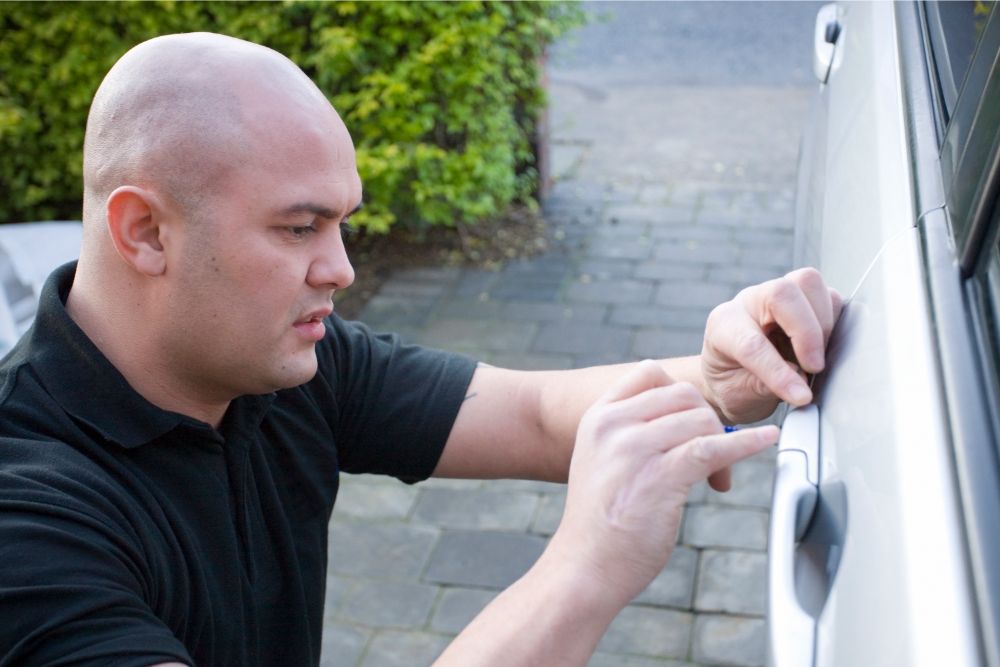Whenever you encounter situations like car lockouts or accidentally lose your house keys, it is always best to consider the services of an experienced locksmith. A locksmith uses both his lockpicking skills that he has acquired from years of experience and his trusty lockpicking kit to open the toughest locks and open them without damaging the locking mechanism, saving you a lot of trouble. Locksmithing as a profession requires a lot of skill and has several types of specializations. While the start-up inventory needed to become a locksmith is fairly minimal, it is essential that the most reputed locksmiths keep the latest tools and equipment, which makes their work much more convenient. A well-equipped locksmith not only has better chances of fully filling the customer’s needs but also gains a higher reputation than his competitors, who do not use as many tools.
Here’s a list of the top tools that are used by a professional locksmith.
Tension Wrench
A torque wrench is the most important and essential tool a locksmith has in his arsenal. Without a tension wrench, it is nearly impossible to unlock any type of lock, even when using the most advanced lock-picking devices. The ‘L’ shaped tool is used to put proper tension on the lock that allows the keyway to be rotated without a key. A locksmith without a good torsion wrench is not a locksmith at all.
Hook Pick
The picking needle is shaped like a hook and hence known as the hook pick. It is also known as a feeler and is never used for raking the lock. The hook picks are available in various sizes and are generally used for locks that need to be opened in a traditional sense and not through the use of any lock pick gun or raking.
Half-Diamond Pick
The half-diamond pick is one of the most versatile picks and is included in nearly all types of lock picking sets. It is generally used for picking individual pins but can very well be used for raking and picking wafer and disk locks. A diamond pick is usually 2.5 – 12.2 millimeters long and the angles at the base of the half diamond can be steep or shallow, depending on the type of lock being picked and the number of picks involved.
Ball Pick
It is similar to a half-diamond pick but has a circular-shaped tip instead of a half-diamond. The ball pick is usually meant to be used with wafer locks, which require a circular-shaped pick to be inserted to hold off the pins. Another variant of the ball pick is called a double ball pick, which is also known as a snowman pick due to the peculiar shape of the tip.
Rake Pick
These types of picks, as the name suggests, are used for raking the locks. The common snake rake is used by repeatedly sliding past all the pins and eventually bouncing them into the shear line. Rake picks are generally used on cheaper locks that do not need to be opened in a traditional way. Raking also requires less skill to pick, is usually a method used by beginners, and makes lock picking fairly easier when operating on simple locks. The rakes are also based on templates of common key configuration, which helps the locksmiths achieve various permutations of pin positions.
Slagel Pick
The Slagel pick, unlike the other picks, is used for opening electronic locks and is fairly less used than the other types of picks. The pick is named after IBM technician James Slagel, who invented this tool. The Slagel pick is used to pull the internal parts of the lock and to manipulate the locking mechanism into place.
Decoder Pick
Like its name suggests, the decoder pick is designed in such a manner that the height of its notches can be changed according to the number and position of the pins inside the locking mechanism of a lock. Decoder picks are not just handy for picking and opening locks but also can be used as a template for new keys to be cut.
Warded Pick
As the name suggests, the warded picks are used to open the warded locks and is also known as the skeleton keys. The warded picks are generally fashioned in a generalized key shape, which is simpler than the actual key. The warded picks are available in a number of various teeth and grooves, which limits their use in other types of locks.
Bump Keys
These are keys that are usually inserted in the keyways and hit with a hammer while applying tension through the torsion wrench. The force of the hammer blow is carried down to the whole length of the key and forces the top pins to jump above the shear line. This is a pretty old-fashioned lockpicking tool and technique that is rarely used, as now most locks come with bump-proof protection.
Pick Gun
The pick gun, also known as a snap gun, is often shown in movies and television as the preferred tool for picking locks. Pick guns are available in both manual and electronic variants and have now become an essential tool for almost every reputed lock smith. The pick gun works in a similar fashion as a bump key, with a gun mechanism that applies pressure to the pick while a torsion wrench is used to rotate the cylinder.

